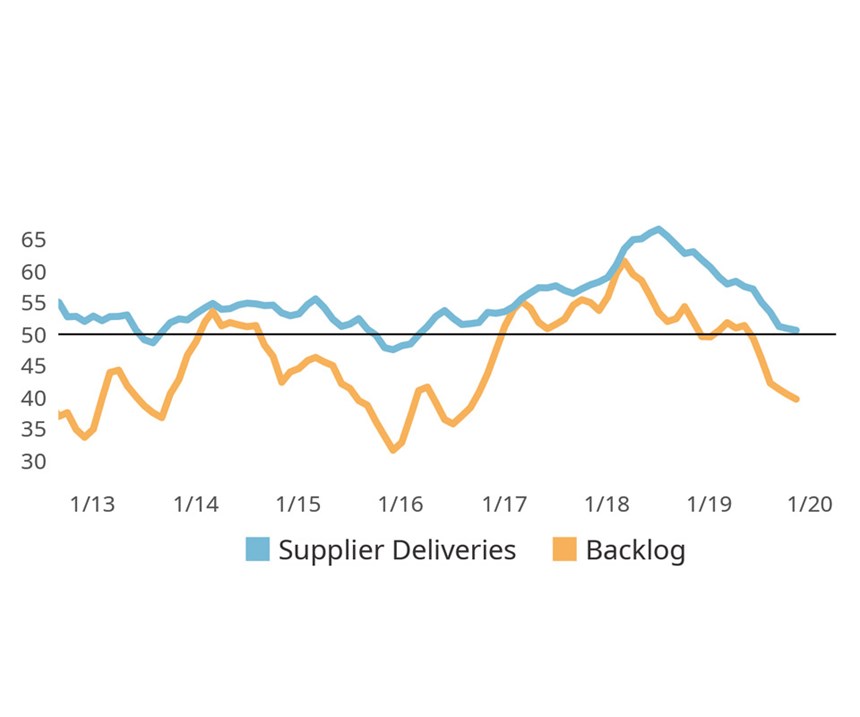Precision Machining Index Extends Contractionary Trend
The Precision Machining Index was relatively unchanged during November at 46.0; extending its contractionary trend for a fifth month.
The Precision Machining Index was relatively unchanged during November at 46.0; extending its contractionary trend for a fifth month. Readings above 50 indicate expanding activity and values below 50 indicate contracting activity. The further away a reading is from 50 the bigger the size of the change in activity. Gardner Intelligence’s analysis of the underlying index components found that, except for supplier deliveries (which reported no change), all other components extended their contractionary trends. The Index—an average of its components—was supported by supplier deliveries, new orders and employment and was pulled lower by production and backlogs. Among all components, the sharp contraction in backlog activity in recent months has had an outsized influence on the Precision Machining Index.
November’s sharply contractionary backlog reading was unexpected, given the stabilizing new orders activity and contracting production activity. The combination of these events in theory would support backlog activity; however, backlog activity continued to quicken its contractionary trend first observed in July. The last time the Index experienced comparably weak backlog readings was mid-2016. The second half of 2019 saw most of the Index’s components follow after exports, which initially reported contracting activity levels at the start of the year. Since July, all Index components, with the exception of supplier deliveries, have at one or several times contracted faster than exports.
About the Author
Michael Guckes is chief economist at Gardner Intelligence, the research and market intelligence division of Gardner Business Media. He provides forecasting, modeling and consulting services to clients and provides content for all Gardner brands. For more information about Gardner’s Business Index, visit gardnerintelligence.com.

.jpg;width=70;height=70;mode=crop)













.jpg;maxWidth=300;quality=90)
